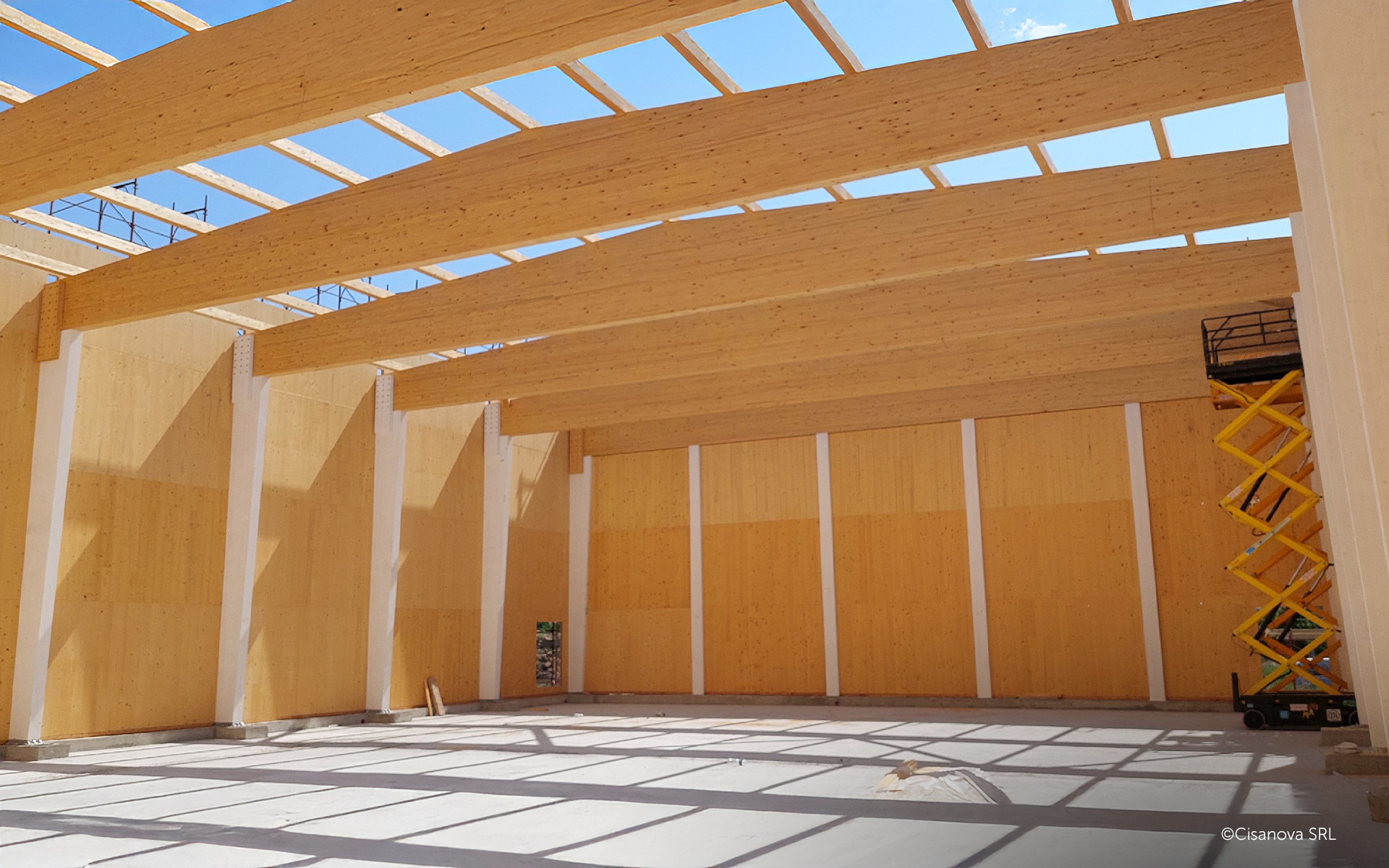
Schools 4.0, nurseries and public infrastructure: in the era of NRRP and EU regulations, timber is the answer
The Superbonus has been a powerful catalyst for the Italian construction industry, generating an investment exceeding €100 billion in just three years. It has led to the creation of over 400,000 jobs, along with thousands of energy efficiency upgrades and seismic safety enhancements, involving a wide network of technical professionals. Approximately 41% of architects and 63% of engineers have undertaken projects related to the Superbonus.
Having run its course, the Italian construction industry is now transitioning into a new phase, propelled by resources allocated through the National Recovery and Resilience Plan (NRRP).
This program prioritises the redevelopment of public infrastructure, including nurseries and Schools 4.0, aiming to meet future educational and infrastructural needs.
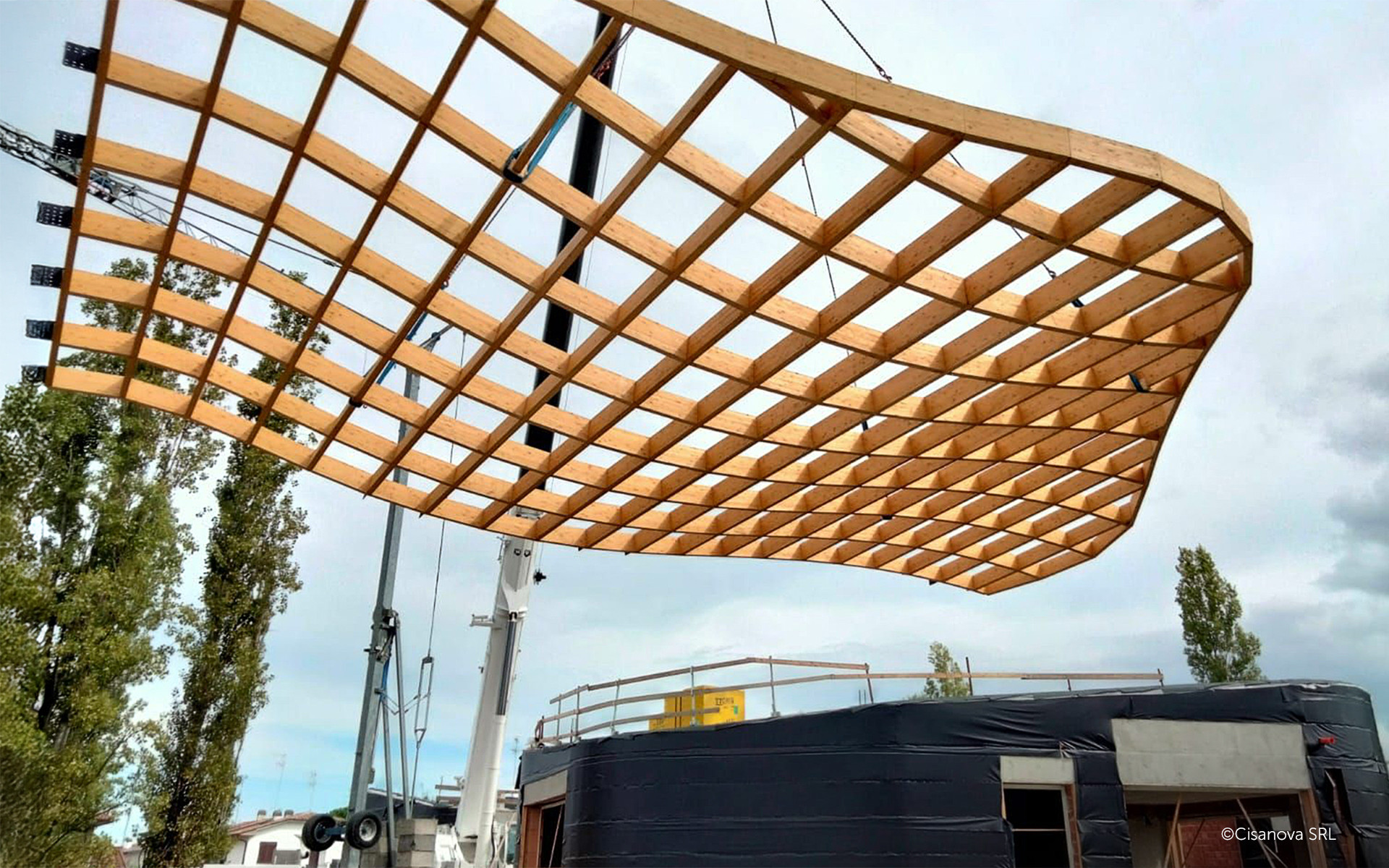
NRRP: nurseries, public infrastructure and Schools 4.0 to be built in record time in Italy, with sustainability as the priority.
The National Recovery and Resilience Plan (NRRP) represents a new frontier for the industry. A distinct rise in tenders for engineering and architectural services was recorded in 2024, particularly for large-scale projects linked to the NRRP, with a 2.1% increase in volume and a 48% increase in value.
The NRRP has become the new driving force behind Italy’s construction sector, with a particular focus on educational buildings. The plan includes major investments in the construction, renovation, safety and energy efficiency of schools and nurseries, with the aim of reducing emissions, enhancing building performance and increasing earthquake resilience.
The European Energy Performance of Buildings Directive (EPBD): Schools 4.0 and beyond.
The Energy Performance of Buildings Directive (EPBD), updated in 2024, is a cornerstone of Europe’s energy transition. With the goal of achieving a fully decarbonised building stock by 2050, the directive sets strict guidelines for improving the energy efficiency of buildings and securing a 60% reduction in greenhouse gas emissions within the construction sector by 2030 (compared to 2015 levels).
This is particularly crucial, considering that:
40% of energy consumption in the EU comes from buildings.
More than one-third of energy-related greenhouse gas emissions originate from the building sector.
Around 85% of European buildings were constructed before 2000, and 75% of these have poor energy performance.
Impact on schools, nurseries and public infrastructure
The directive places a particular emphasis on public buildings, including schools, nurseries and other public infrastructure, as part of a targeted strategy to transform these spaces into models of energy efficiency and sustainability. Key measures include:
New zero-emission public buildings – From 2025 onwards, all new buildings must be designed to have a climate-neutral impact throughout their entire lifecycle.
Mandatory renovations – Buildings with the poorest energy performance will undergo targeted interventions to comply with minimum energy efficiency standards.
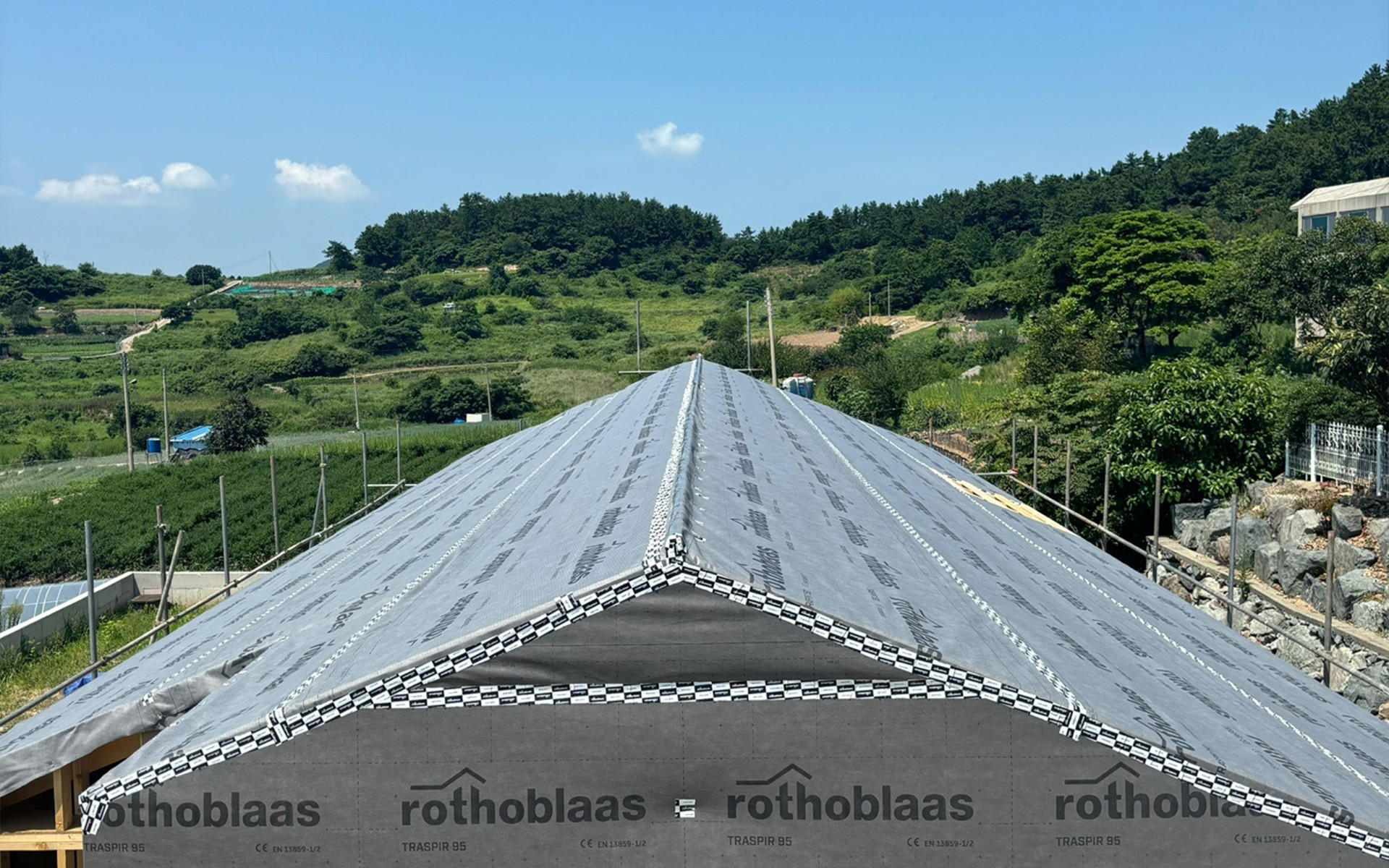
Timber schools: a new business opportunity for architects and builders
Both the Italian NRRP and European regulations place a strong emphasis on construction timelines. Nurseries, schools, but also gyms and public infrastructure must be zero-impact by 2025, while all NRRP-funded projects must be completed by 2026.
This means that these new schools must adhere to strict sustainability requirements while meeting tight construction deadlines. Timber, as an ecological building material, provides a practical solution.
Under Futura, the Italian NRRP program dedicated to school construction, public tenders total €5.2 billion, which translates into 1,800 interventions for nurseries and preschools, 400 new gyms and 195 new schools – hundreds of thousands of square metres of new construction, creating a unique opportunity for the building sector.
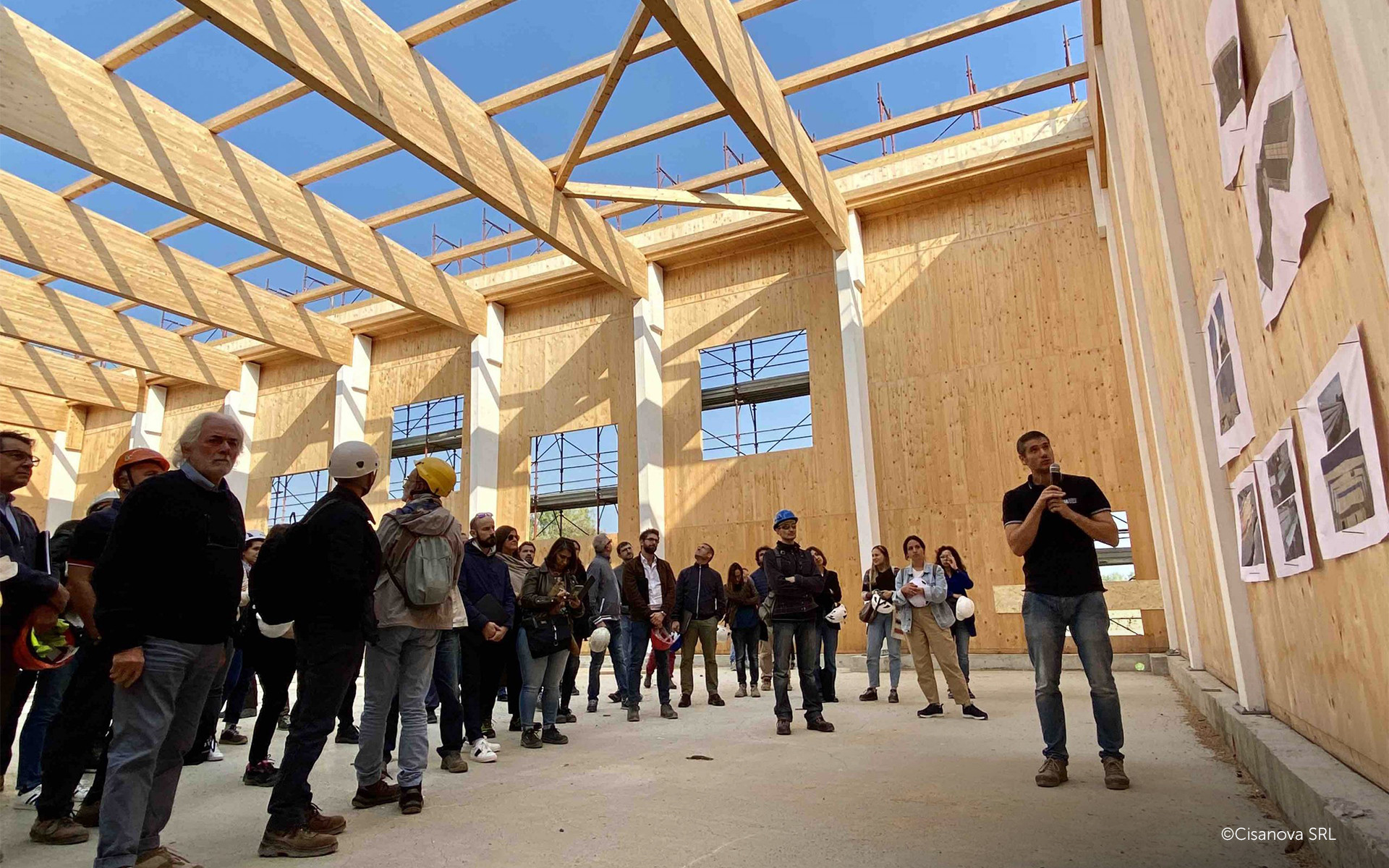
Case Study: the future of timber school infrastructure in Italy and Europe.
The timber school complex in Sissa Trecasali
With large outdoor green spaces accessible from every classroom, educational laboratories, a large courtyard and a gym, the Sissa Trecasali school complex is a model example of sustainable timber school construction. The €6.5 million project, located in the Parma region, was completed within a few months by Cooperativa Buozzi and Cisanova S.r.l.
Built using prefabricated load-bearing timber panels, the adopted solutions ensure this 3,000-square-metre structure meets all regulatory, safety, quality and sustainability standards.
The choice of structural timber transforms the building into a carbon reservoir, capturing 825 tonnes of CO₂ from the atmosphere through the timber used in its construction.
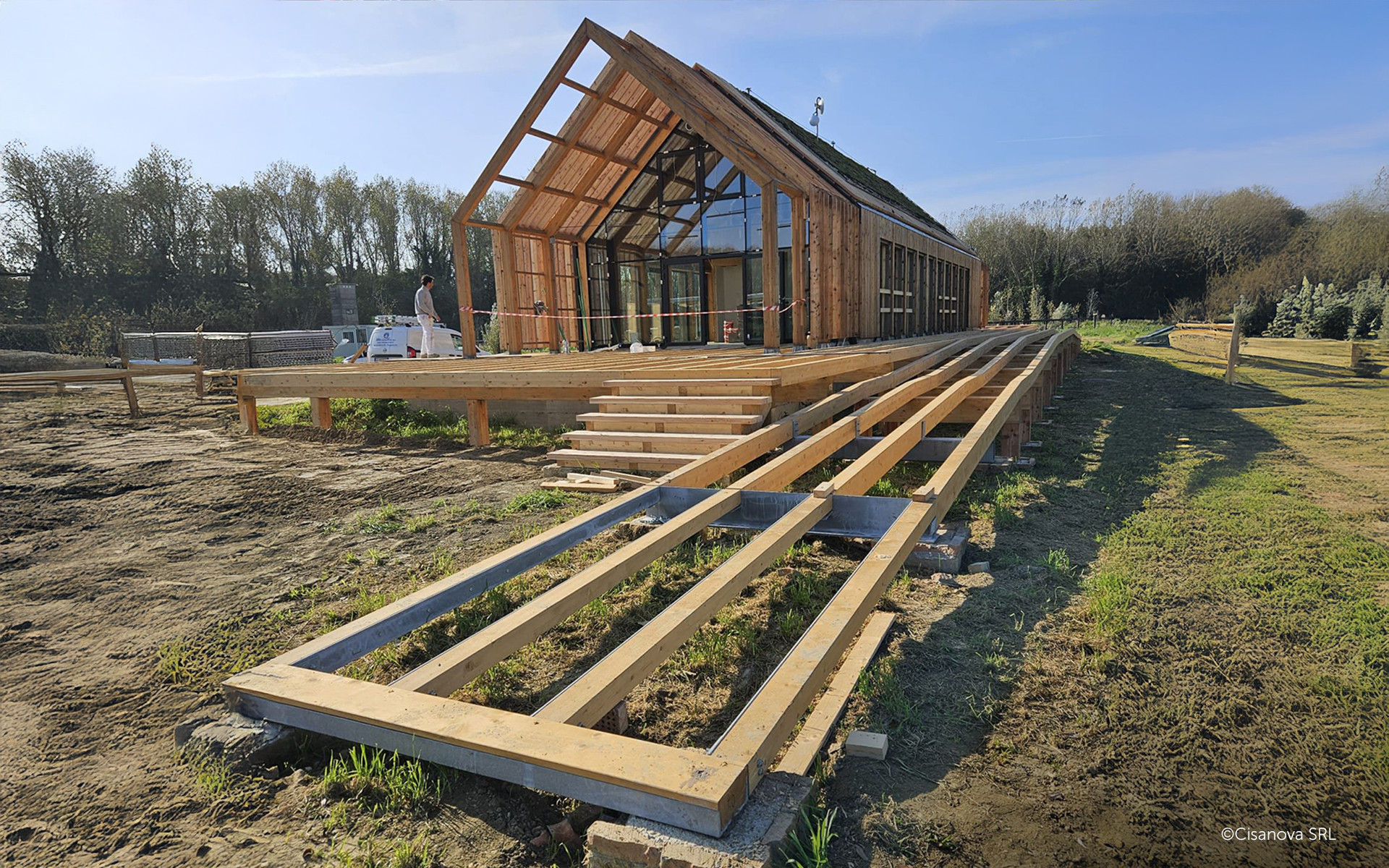
Classroom in the Varramista forest
Smaller but equally ambitious, the school in the Varramista forest serves as another compelling case study. Cisanova S.r.l. was responsible for the design and construction of this forest classroom in Montopoli in Val d'Arno, Pisa, relying on Rothoblaas solutions to ensure a sturdy and durable structure.
The use of STA Dowels, VGZ screws and HBS screws enabled the rapid creation of precise connections. However, the standout feature of this project is X10: in this installation, it enables the structure to be raised above the foundation, effectively preventing rising damp.
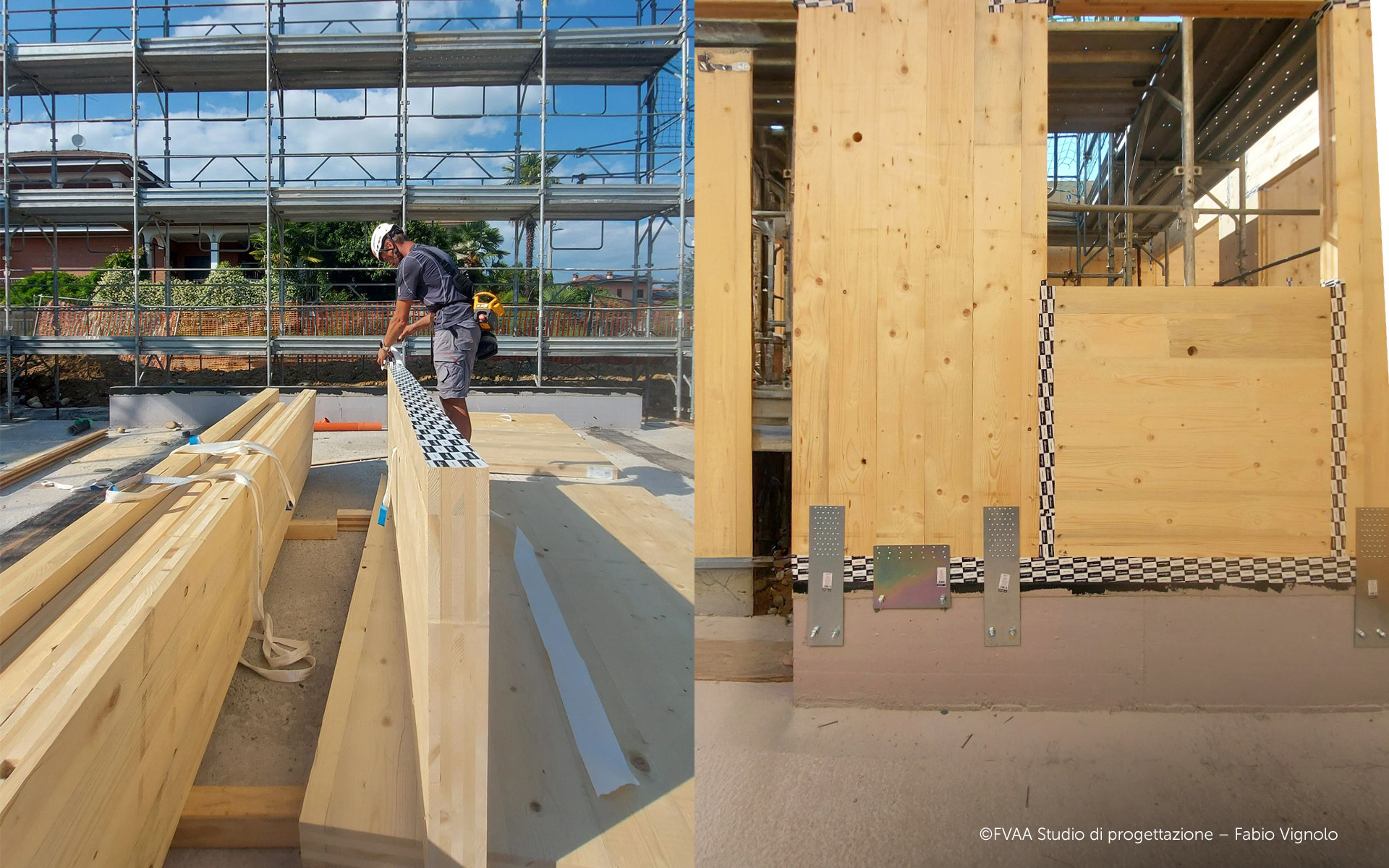
A school fully funded by the NRRP: the Gattinara early childhood complex
The Gattinara early childhood complex, located in the province of Vercelli, was built thanks to NRRP funding secured by the local administration. The project involved Sicet S.r.l., Alba Costruzioni S.r.l. and XLAM Dolomiti.
The structure was designed using CLT panels for the walls, lift shaft, stair ramps, first-floor slabs and roof coverings, combined with glulam beams for the larger-span sections. The second-floor roof was developed using a system of beams, joists and exposed fir wood matchboard, showcasing high-impact structural and architectural solutions.
The integrated design, developed through a collaboration between FVAA Studio di Progettazione and Studiorinnova S.r.l. STP, was based on a digital workflow shared in a 3D Archicad environment.
All panels and structural elements were installed using Rothoblaas LBV and TITAN plates, alongside FLEXIBAND taping to ensure long-term protection of the timber components.
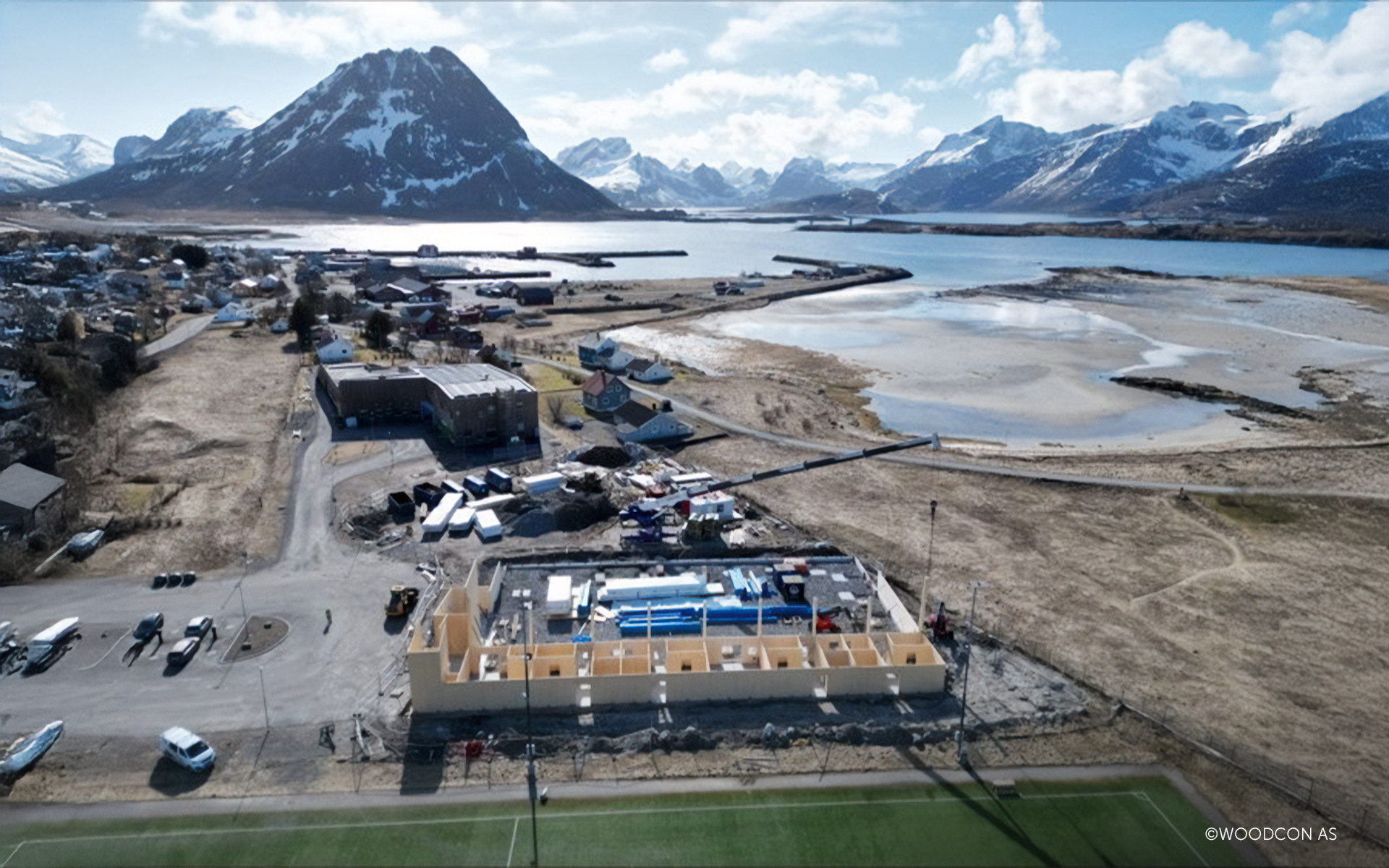
From Northern Europe: where timber schools are the norm – even in the Lofoten Islands and Svalbard
The Flakstad school in Lofoten, Norway, along with its adjacent gym, is a project par excellence. The school building was constructed using approximately 800 elements in solid wood and glulam, including structural components up to 16 metres in length. The elements were transported by Grenland Rail via rail, ensuring a reduced environmental impact.
Designed by LINK Arkitektur, the project was completed with materials and on-site support provided by Woodcon AS, with the contribution of Peyma Entreprenør AS – responsible for the overall execution – and an impressive network of partners, including Stora Enso, Woodplan GmbH, Moelven Limtre AS, Dimensjon AS and Rothoblaas – which in this case, supplied the fastening systems such as TITAN plates.
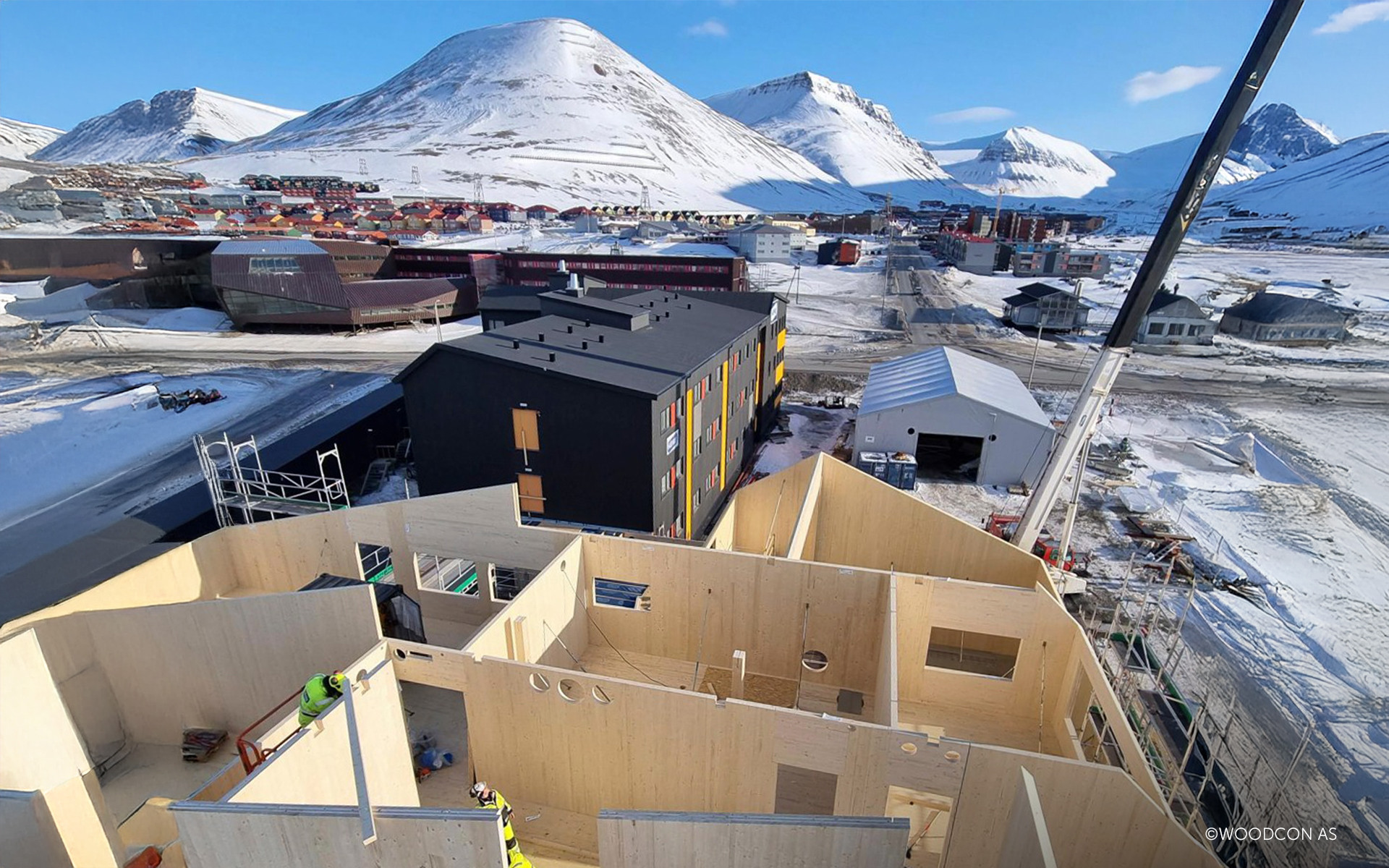
Woodcon AS also supplied materials and on-site support for what is likely the northernmost timber school in the world.
In the remote islands of the Arctic Ocean, where the northern lights illuminate the sky, new generations go to school in a technologically advanced and fully sustainable building. Located in the Svalbard Islands (Norway) – the northernmost inhabited area on Earth – Rothoblaas partnered with Woodcon AS and HÆHRE ARTIC, supplying thousands of HBS EVO, HBS, VGS and VGZ screws for the construction of the SVALBARD FOLKEHØYSKOLE, a green-profile school set in a breathtaking landscape. Here, the most critical aspect was the selection of fastening systems capable of withstanding extreme polar temperatures.
Whether it’s nurseries, Schools 4.0, large-scale infrastructure such as gyms, or smaller projects like forest classrooms, timber continues to establish itself as a pioneering and sustainable building material.
The five pillars of timber school construction
The effective use of timber in construction requires a strong focus on five essential pillars:
Durability – Particular attention must be paid to the design of the ground connections, fastenings and joints, which are essential to ensure the longevity of the structure.
Acoustic comfort – Properly decoupling timber elements (e.g., using XYLOFON) and implementing acoustic insulation systems is essential in mitigating the transmission of impact and airborne noise
Seismic resistance – Seismic resilience is a key priority in high-risk areas such as Italy and Mediterranean Europe. Thanks to their lightweight and flexible nature, timber buildings can outperform concrete structures in terms of earthquake resistance.
Resistance to fire – Fire safety is essential in buildings designed to accommodate large numbers of people. Contrary to common perceptions, timber can deliver excellent resistance to fire, particularly when carefully designed to protect critical structural elements, such as steel joints.
Water and air tightness – A well-designed building envelope should be impermeable to water while remaining breathable, allowing water vapour to escape without permitting water infiltration. This ensures balanced indoor temperatures throughout both summer and winter.
How to get the most out of the NRRP and European Green Deal?
In Italy alone, Unioncamere estimates that 50,000 engineering graduates could potentially be employed in the construction of nurseries, Schools 4.0 and NRRP-compliant infrastructure.
Investing in training is essential: architects, civil and structural engineers now have a major opportunity to embrace this transformation and capitalise on the funding opportunities provided by the NRRP and the European Green Deal.
Rothoblaas provides three key resources, in addition to the most advanced and comprehensive range of solutions for large-scale timber and hybrid construction:
Advanced training on cutting-edge technologies and international regulations for large timber constructions, including TEEW Italia and TEEW International courses, recognised as leading programs for specialisation in timber design and construction, along with Rothoschool events held worldwide.
Access to a global network of experts, academics and engineers, enabling professionals to enhance their skills and develop new collaborations through industry-leading events such as the Mass Timber Seminar
Technical support and specialised consultancy, ensuring quality and excellence in projects incorporating Rothoblaas solutions.
With these resources, professionals can lead the transition towards Construction 4.0.
All rights reserved
Technical Details
- Companies:
- Coop.Buozzi; Cisanova srl; Sicet srl, Alba Costruzioni; XLAM Dolomiti; FVAA Studio di progettazione; Studiorinnova S.r.l. STP; LINK Arkitektur; Woodcon AS, Peyma Entreprenør AS, Stora Enso, Woodplan GmbH, Moelven Limtre AS, Dimensjon AS; HÆHRE ARTIC
- 国家:
- Italy
- 产品:
- STA VGS VGZ HBS EVO HBS X10 LBV FLEXI BAND XYLOFON









